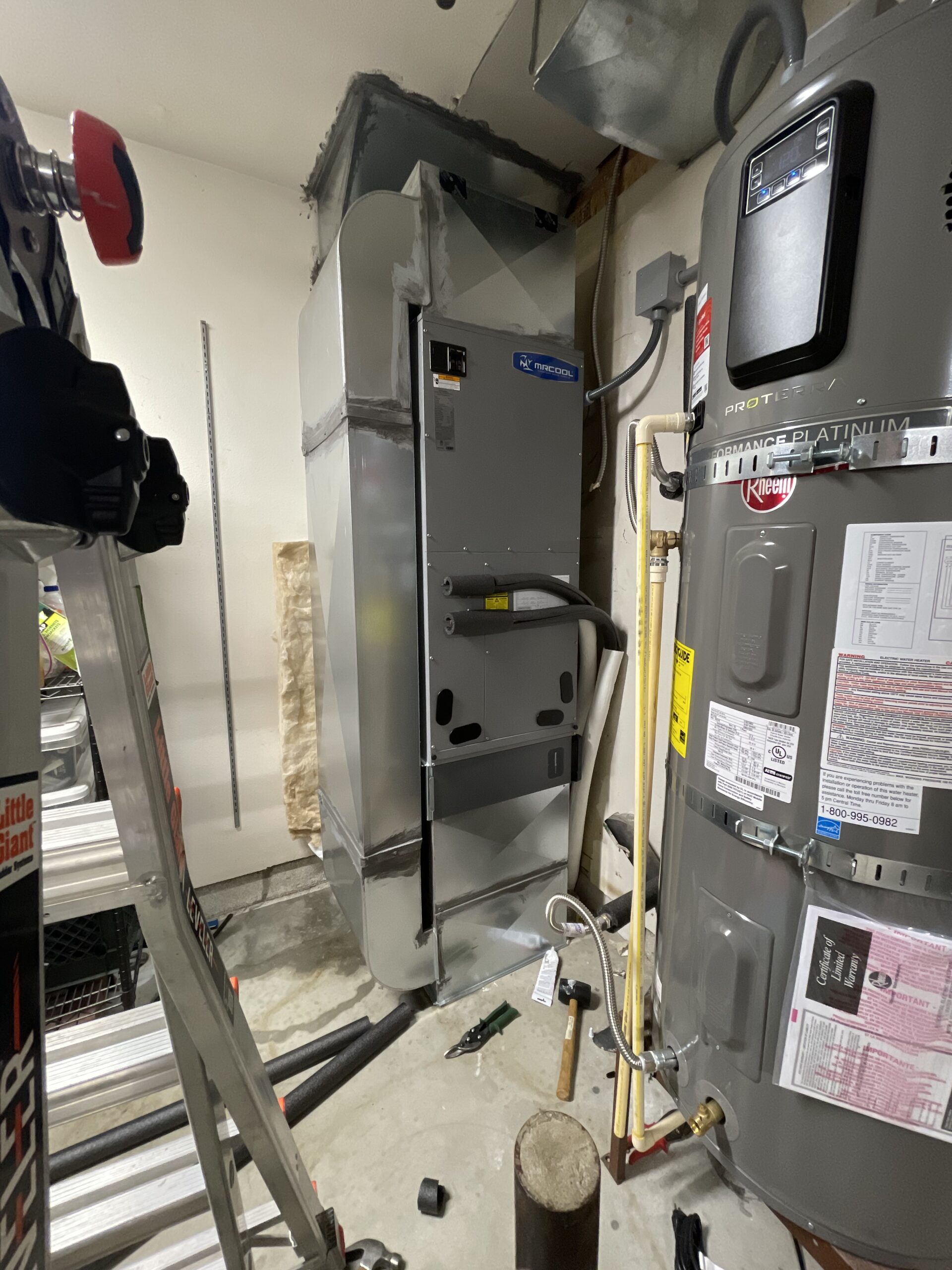
Mr Cool Universal Install
(Post in Progress)
TL;DR: DIY installation of a Mr Cool Electric Heatpump HVAC system for about \$ 7k, compared to contractor quotes of around \$ 20k
Our Portland home came with the original gas furnace aged about 25 years. As we didn’t have air conditioning, when the heat dome of 2021 hit Portland, bringing temps up to 115F, our home project prioritization changed a bit, to say the least.
So in 2022, we started taking quotes for upgrading our hot only to a hot-and cold system. A couple quotes later, we learned most HVAC installers only install one make of system, as they are essentially distributors. Further, they do not as a rule install systems purchased directly by the homeowner, as much of their profits come from marking up the HVAC systems themselves.
Before and After
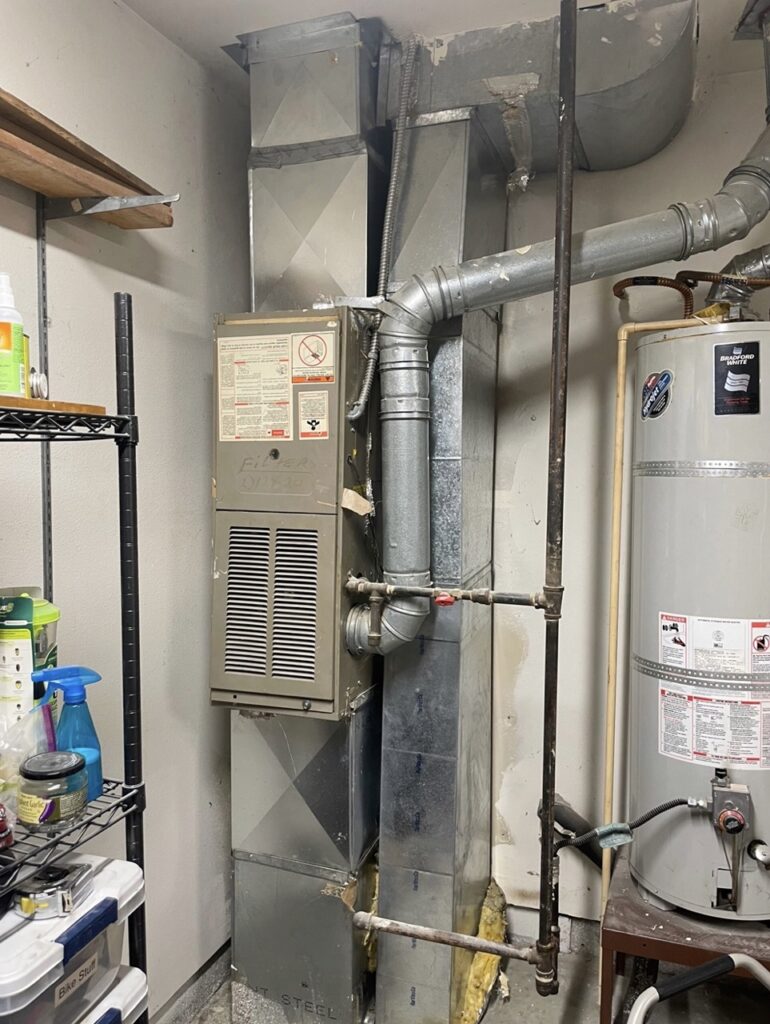

Looking into the state of the art, DC Inverter systems have been taking the industry on in force, in the form of mini-splits. As we already had duct-work in the house, I started looking for a DC Inverter system that could handle the whole house (1700 sq feet, or a 3-ton system), leveraging the ducting. There are several manufacturers and products to choose from, the one we landed on that I liked was Mr. Cool Universal Series. It’s a newer manufacturer, but one thing I liked was they sell the system with a precharged line-set, meaning you really just have to hook everything up, no soldering copper pipe or charging a system.
I was excited about the DC Inverter heat pump system, for its efficiency and finer control. In more traditional AC systems, the compressor (which manages how much head you can absorb into your coolant) is essentially binary: on or off. A DC Inverter allows the compressor to run in variable speed, getting much higher efficiency gains (This unit runs at 20 SEER). One downside of Mr Cool is given that it’s a newer manufacturer and designed for homeowners to install, most HVAC technicians won’t want to touch it for liability reasons. I haven’t had to call on one yet, but its something to consider. If I could do it again, I’d spend more time researching Mitsubishi’s systems, as they have more history and are more accepted by the trades.
Cost
Total Cost was around $7,500, which is nearly 1/3 of the costs of 2 quotes from local contractors I received. Definitely a project worth taking on!
| Item | Cost ($) |
|---|---|
| Mr Cool Universal Series (Amazon Prime got 5% cash back) | 3,625 |
| Mr Cool 8kW heat strip | 183 |
| Wiring | 250 |
| Breakers | 90 |
| PVC conduit, external interrupt, hammer drill | 345 |
| Ductwork | 1,500 |
| Nest Thermostat | 250 |
| Labor to cap off gas and shut off | 420 |
| Electrical Permit | 182 |
| Mechanical, Plumbing Permits | 150 |
| Incidentals | 300 |
| Total | 7,295 |
Design
The main things to figure out were: how big a system we needed, how to interface with the existing ducting, and how much current we’d need to run it. Since we were pulling Electric, Mechanical, Plumbing permits to set it up, we decided to replace the water heater with a modern heat pump one as well, removing any natural gas needs from the house. A 1,650 sq foot house warranted a 3-tonne AC system. Another nice feature of the Mr. Cool Universal is it can be run in 2-ton or 3-ton mode.
Additional Heat Strip

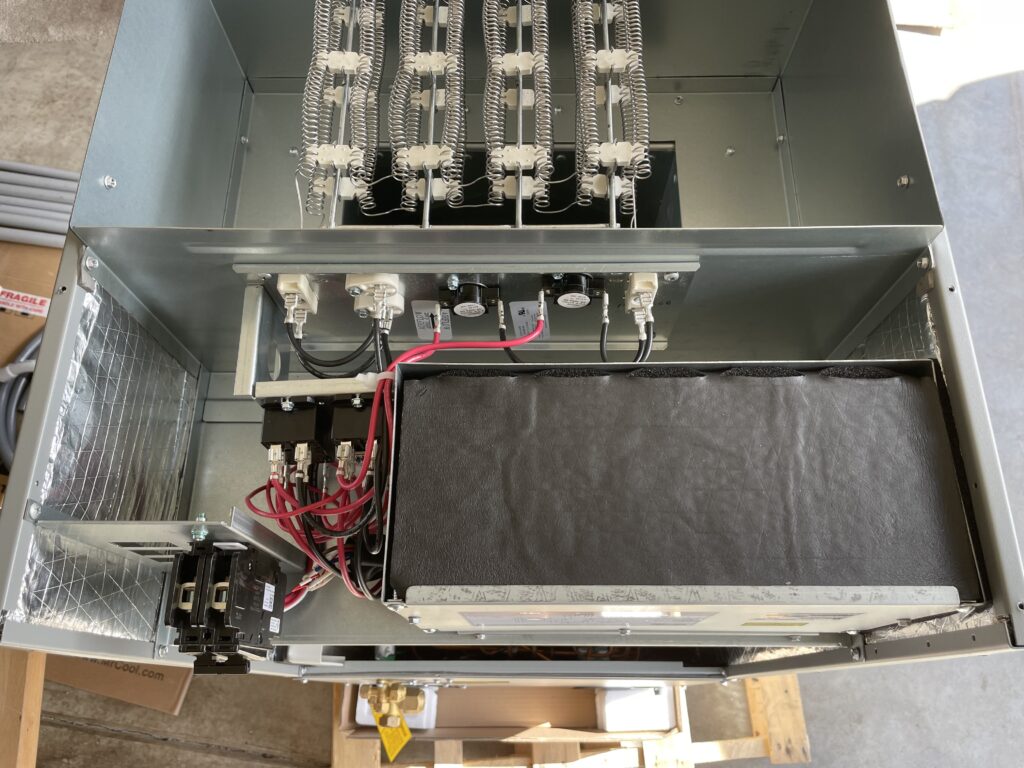
The fine folks at Ingram’s water and air are wholesale distributors and were very helpful on the phone. I ended up buying the whole unit off of Amazon as it was a few hundred cheaper, and I could get an additional 5% with a prime card. I did buy an 8kW heat strop from Ingrams, on their suggestion that on really cold nights, would need the ancillary help.
Electrical
- Permitting
- NEC
Ductwork
The hardest part with interfacing to the existing ductwork was that our house has ducts below the first floor and above the second floor. The system return is in the floor of the second floor. I spent some time in fusion360 sketching out a few ideas of how to interface the unit in, and it was complex! I decided to reach out to a local shop and duct fabricator, Vinje and Sons, who are amazing and come super highly recommended. They got some basic measurements of the holes and locations from me and designed, fabricated a much simpler interface.
My Initial Designs: Green is the unit, the teal at top and yellow at bottom are the duct interfaces, and the orange at top is the return.
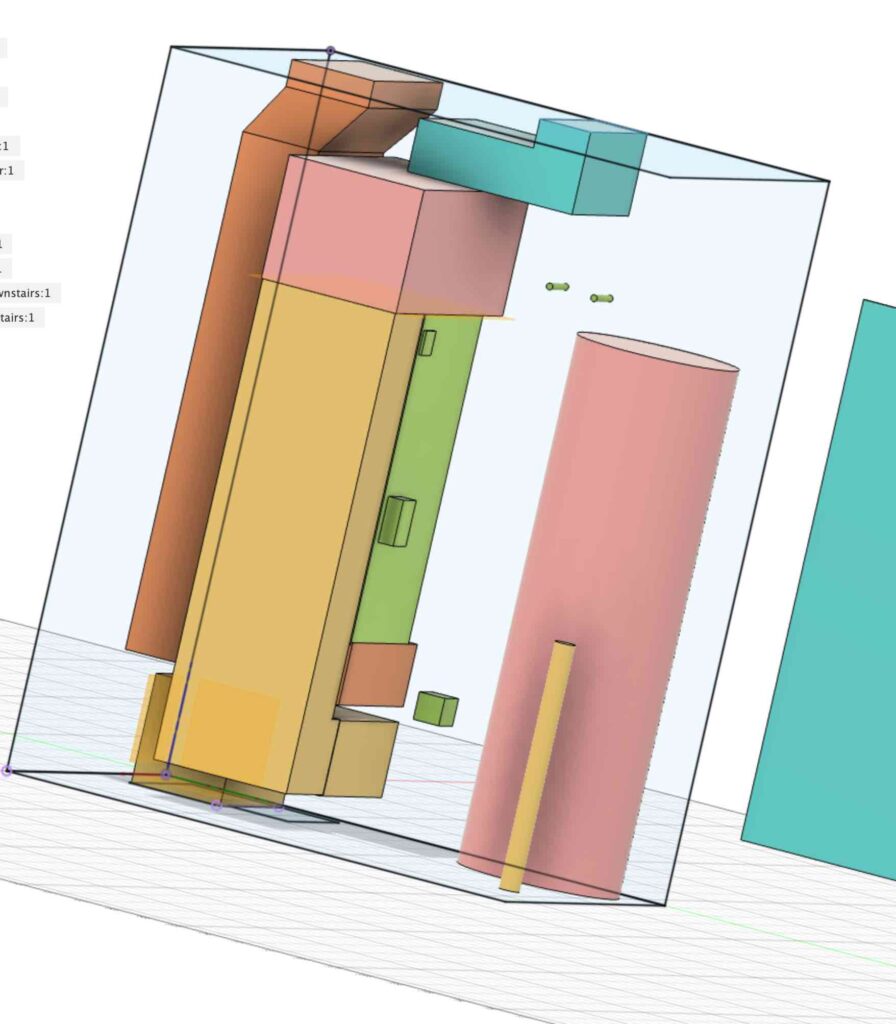
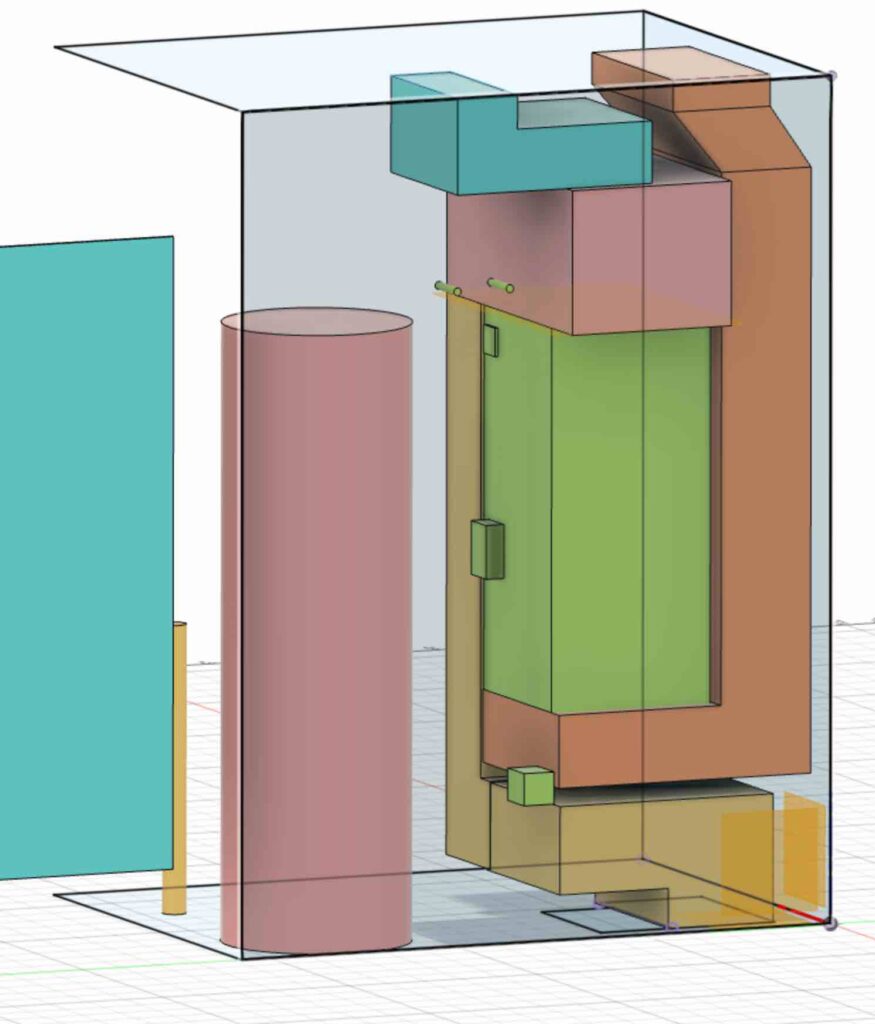
Basic measurements for Vinje
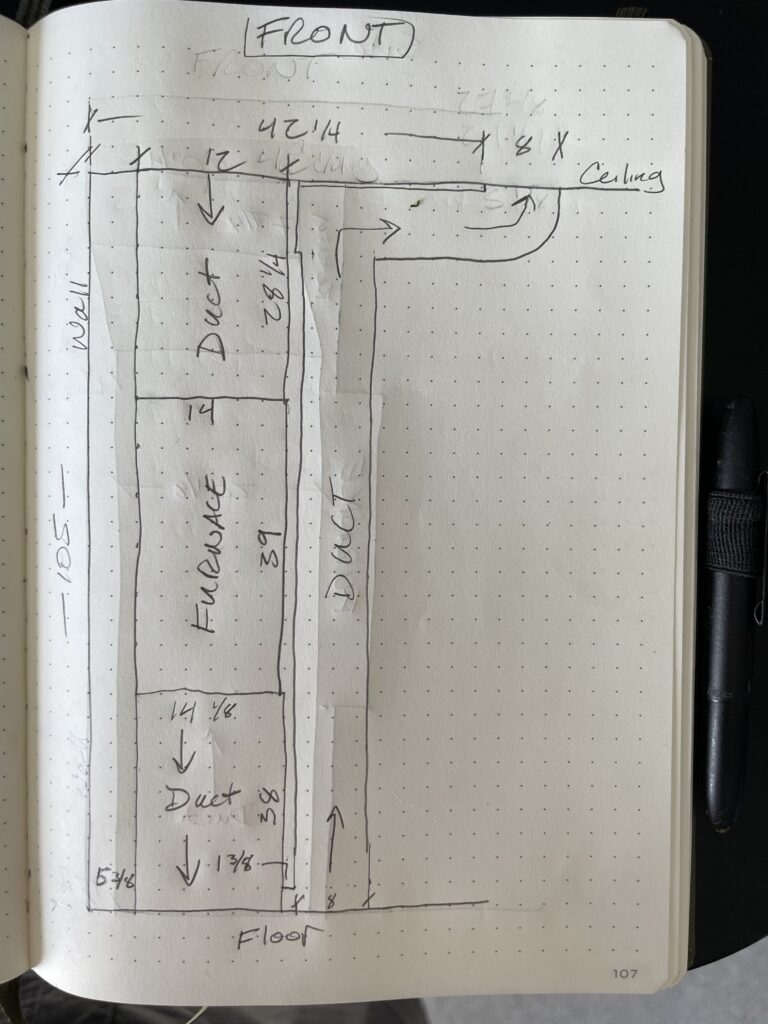
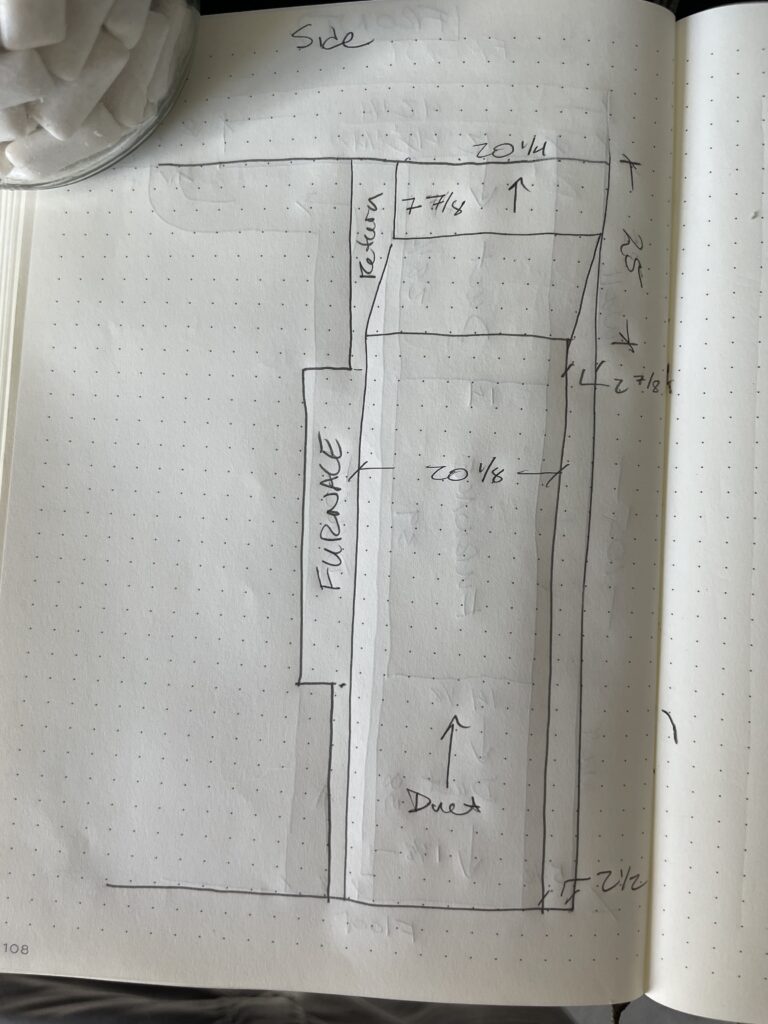
Vinje had me install the ducting in two steps, once for the main parts, then I went back with measurements for the final upper duct connection. A few shots of installing the Vinje Ducting and measuring for the final outflow
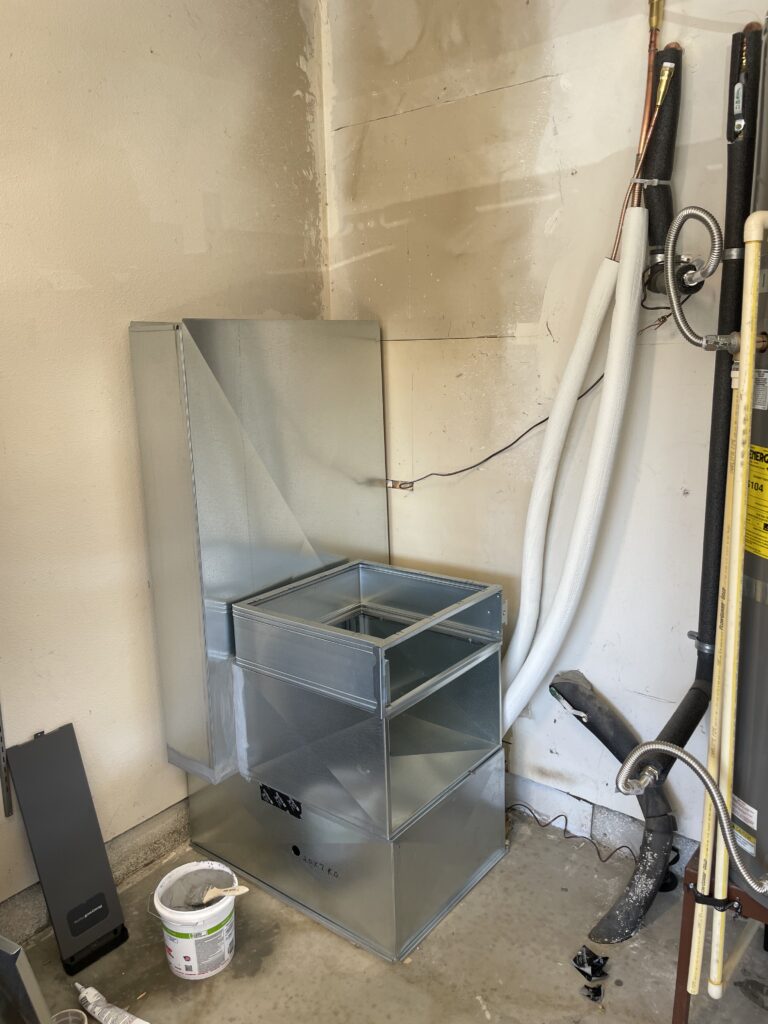
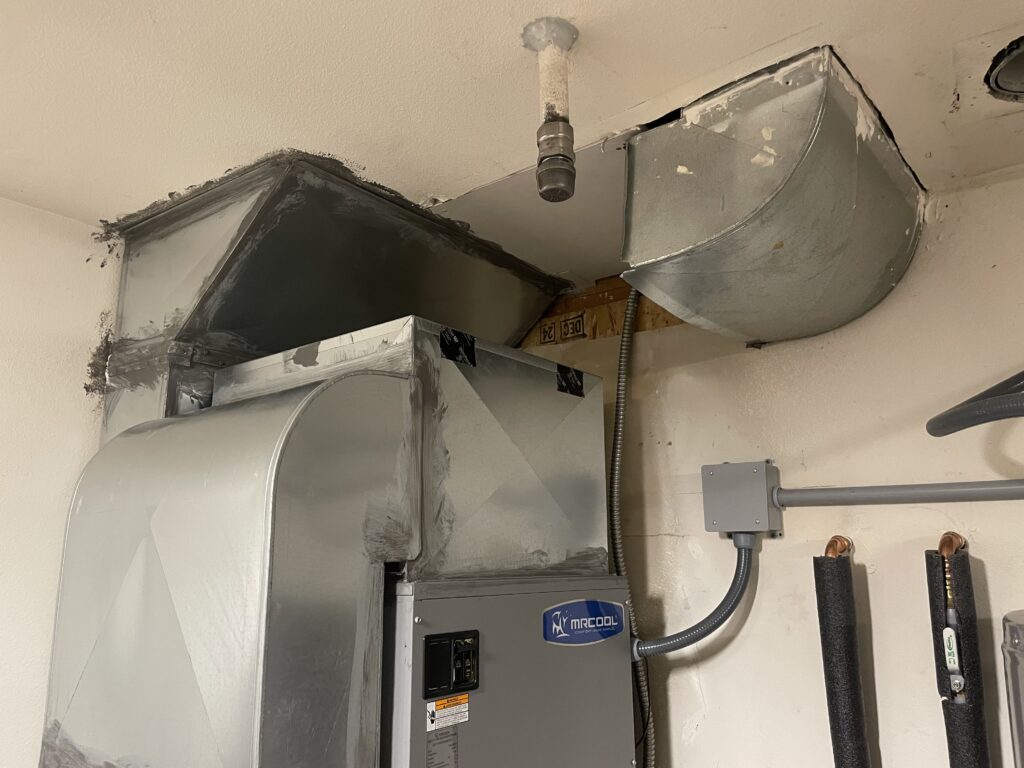
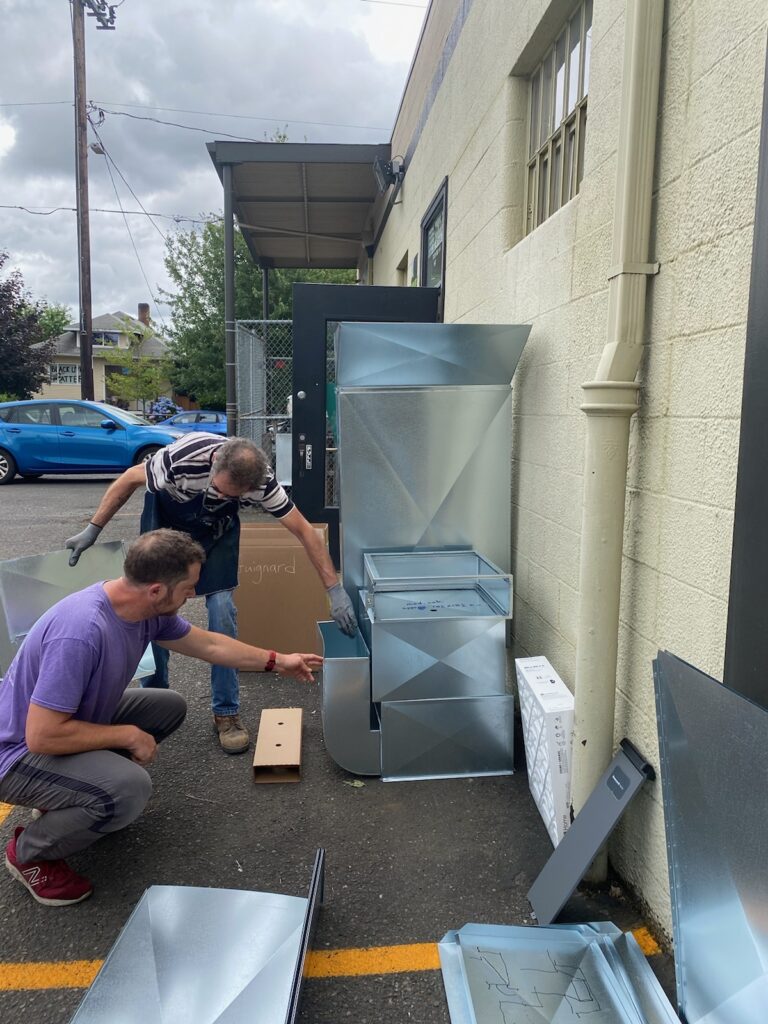
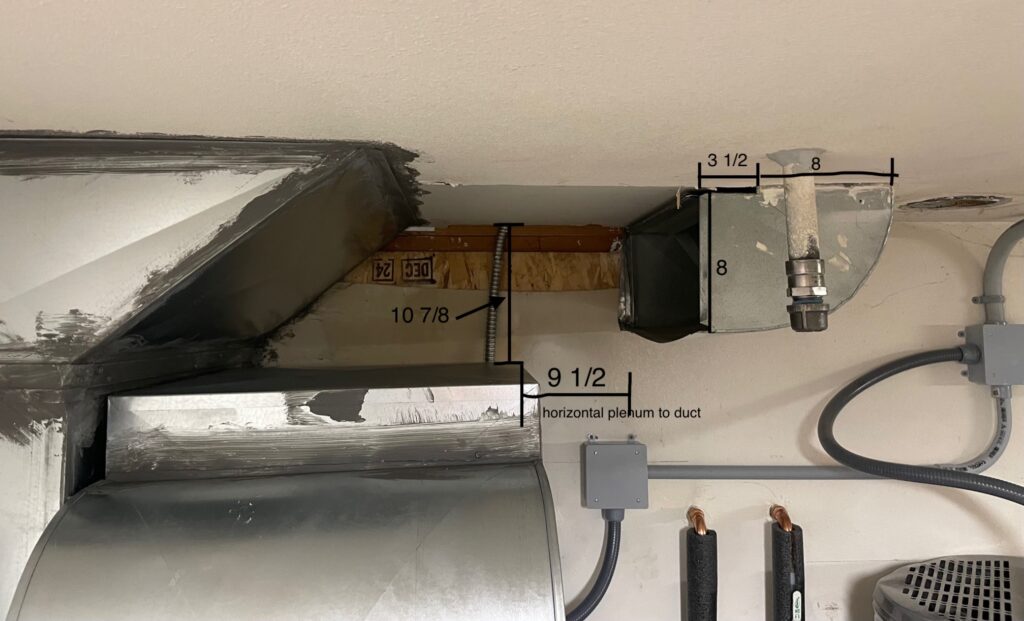
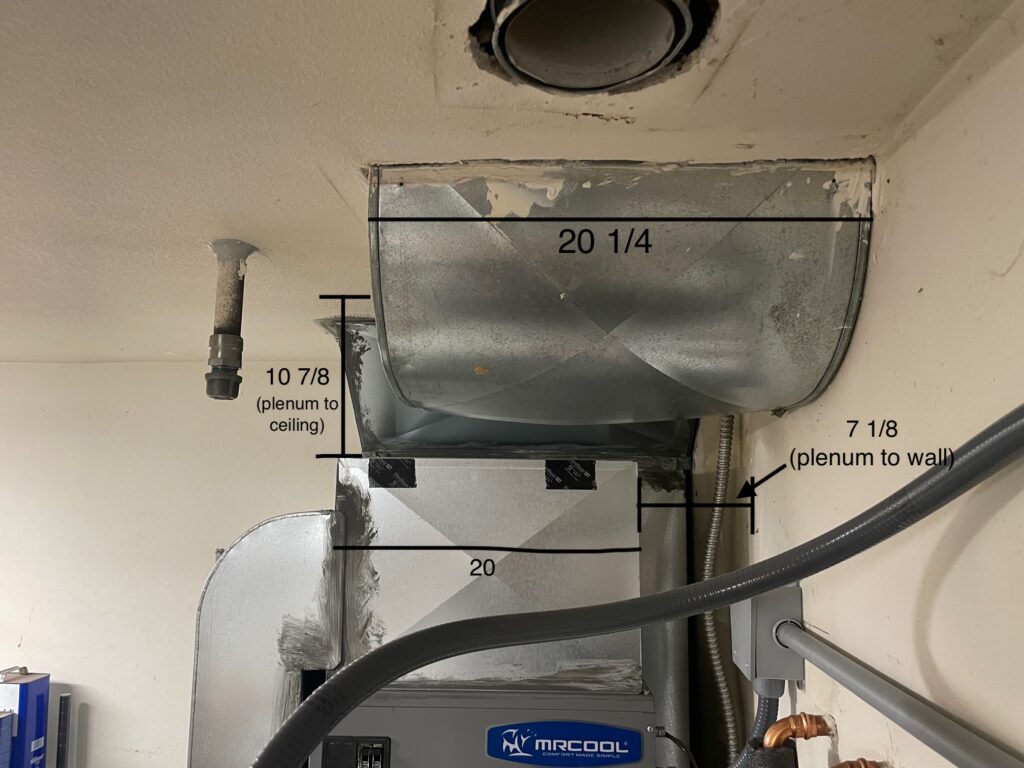
Lessons learned
2′ between appliances, 3″ off ground for condenser
inspections can be easy?
Cost Breakdown
- prior (gas + electric)
- post (Electric)